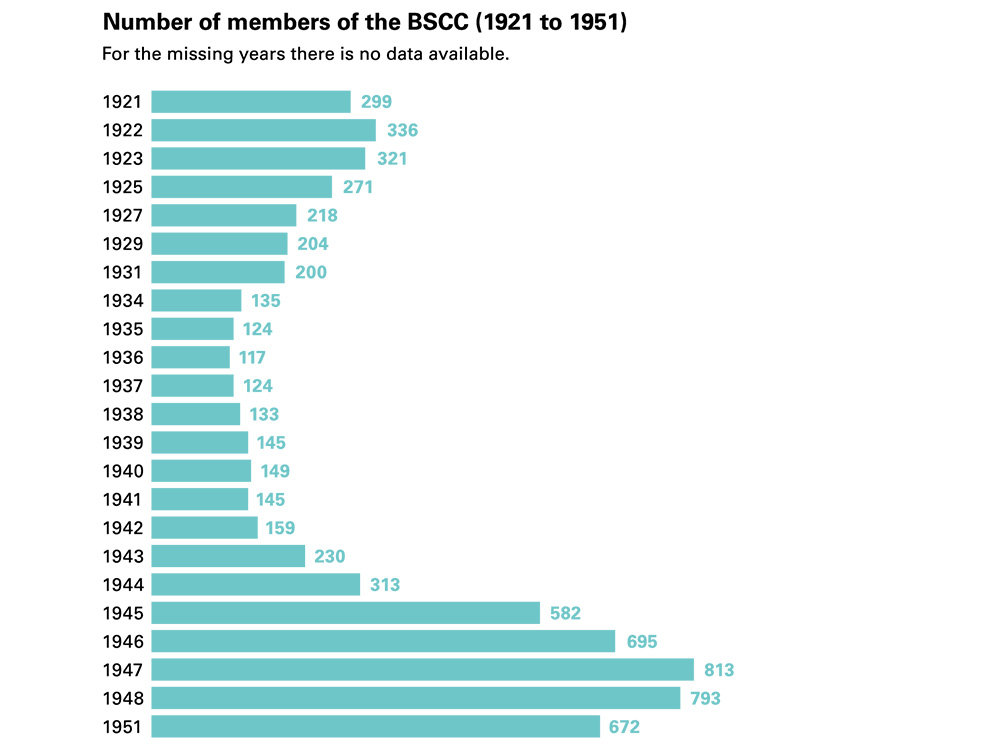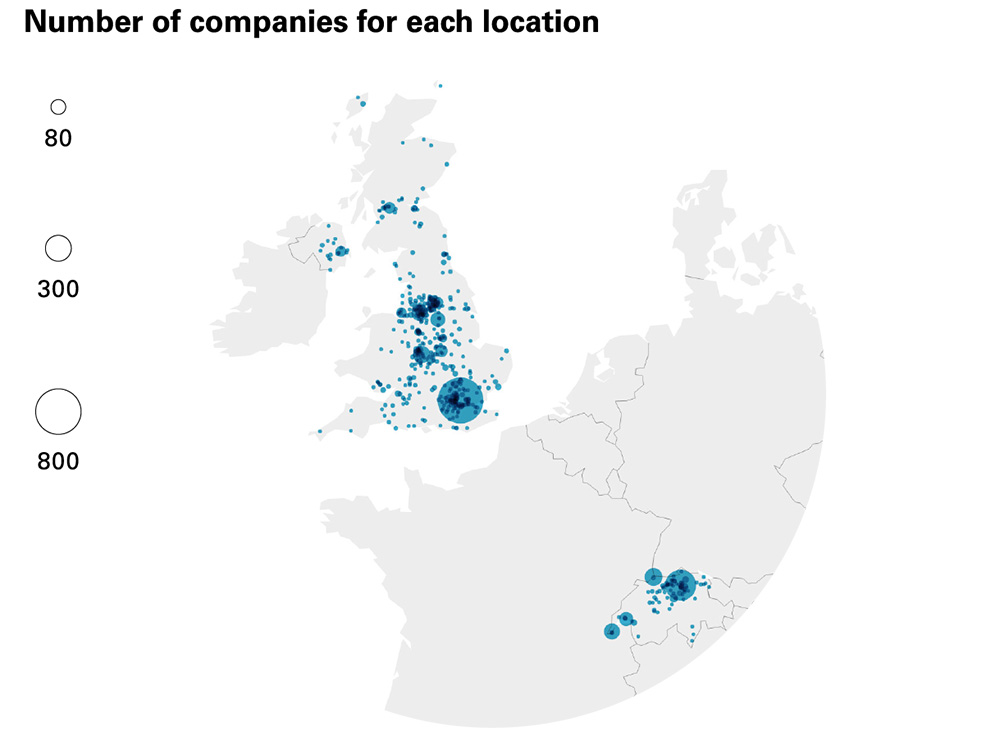Hidden network.
Text: Noëmi Kern
Unlike in the natural sciences, much of the data in the humanities is only available in analog formats. Digital humanities is changing this and in doing so, opening up new fields of study.
The records of the British-Swiss Chamber of Commerce (BSCC) are a treasure trove: Its files contain information on over 3,000 actors that dealt in more than 1,400 consumer goods – from leather gloves and rubber tires all the way to metals.
Membership was open to any company in any sector conducting business between Switzerland and the United Kingdom. The BSCC supported the companies by representing their economic interests in the political arena and providing them with information. The organization was founded in 1920 in Basel with the aim of reinvigorating the economy following the end of the First World War. And it is still in existence today.
Lea Kasper evaluates the source material that has been stored in the Swiss Economics Archive since 2021. Kasper, a doctoral researcher at the Institute for European Global Studies at the University of Basel, focuses on the years 1920 to 1950 – the period after the founding of the BSCC up through the end of the Second World War. She wants to explore how the BSCC developed during these periods of crisis, taking metrics such as its number of members into consideration (see graphic). “The war obviously affected trade relationships. The companies were headquartered in Switzerland or the United Kingdom, respectively, but they had business relationships that extended around the globe. This data is part of international economic history.” The fact that both smaller and larger companies from different sectors were represented in the BSCC makes it possible to present a more complete picture than could be garnered from data stored in the archive of any one particular company, which would naturally place more emphasis on that company's own history.
Lea Kasper is especially interested in the raw materials and metals sectors because these industries are more crisis-resistant than trade in luxury goods. During the period she studies, a large share of the world's business transactions in the raw materials sector were made in Switzerland. Goods trading is intimately linked, on the one hand, to services, and on the other, to agents that brokered deals between companies. These bonds formed a network that can be traced using the records of the BSCC. It kept files on its members and their activities. The members lists include company names, addresses, headquarters, goods traded and business partnerships. By studying these lists, it is possible to find companies in the files that were not members of the BSCC.
No results without technology
Its registries therefore reveal information on a trade network spanning the globe – in theory, that is. It would be impossible to map all the data by hand. This job requires a specialized digital research environment that Lea Kasper was able to select for her project thanks to a Doc.CH grant awarded by the Swiss National Science Foundation. The Institute for European Global Studies provides excellent conditions for digital humanities projects and offers students opportunities to collaborate with innovative, up-and-coming researchers.
With the aid of Research and Infrastructure Support (RISE), the University of Basel’s consultation and training center for digital projects, Kasper is now busy collecting and evaluating comprehensive datasets and developing and improving new technologies.
This allows her to answer questions that couldn’t even have been asked without digitalization. For example, the machine categorizes the individual elements of the member entries (company name, headquarters, trade goods, etc.) and labels them with tags. This allows searches to be conducted – and filtered – later on. “Going through the members lists and tracking how long a particular company was a member in the BSCC and how their activities and partnerships may have changed during that time – it would be impossible to do all that without using digital technologies,” says Lea Kasper. In other words, until now, the source material from the BSCC would never have painted a complete picture. Now, a search is all it takes to find an analysis of the data.
The machine needs help
Of course, it sounds simpler than it actually is. Considerable preparatory work was necessary before the researchers could obtain reliable results. “You have to train the machine to read the sources properly. If it makes an incorrect or incomplete record of the data, that can have far-reaching consequences when it comes to analyzing that data,” explains Kasper.
For instance, she had to define in advance that the machine should interpret the element “Mrs.” to mean a woman and teach it what certain symbols in the entries stood for. Kasper also had to help the machine identify locations based on their coordinates: “Some of the names of the towns have changed over time. Tracing that information requires a historical understanding that the machine doesn't have.”
So, humans and machines work hand in hand where neither can manage alone. “On the one hand, you need to trust the capabilities of the technology, and on the other, you have to understand its limits,” reflects Lea Kasper.
Avoiding data graveyards
Results based on machine-processed data must be verifiable, reproducible and available on a long-term basis, emphasizes Lea Kasper. Along with these criteria, there is also the question of how to display digitalized raw data. In the case of the BSCC, the interdisciplinary team decided to store an image of the original source alongside each computer-generated entry of the member registry. That image serves as an unmediated original of the later processed data.
Going forward, both the data and the digital infrastructure will be made available to anyone around the world who wishes to use them. The aim is to produce a correct – and complete – record of the sources so that they can be used for future research. For instance, it would be plausible to create curricula vitae of persons in the registry, trace the networks of individual actors or shed light on the development of certain companies over the course of time.
Lea Kasper finds the technological and methodological questions posed by this project just as fascinating as the data itself. She enjoys the structured, rule-based approach and interdisciplinary collaboration. Even once she has finished her dissertation, the data will still have plenty to reveal, a fact that she finds “one of the best things about working digitally”.
More articles in this issue of UNI NOVA (May 2023).


